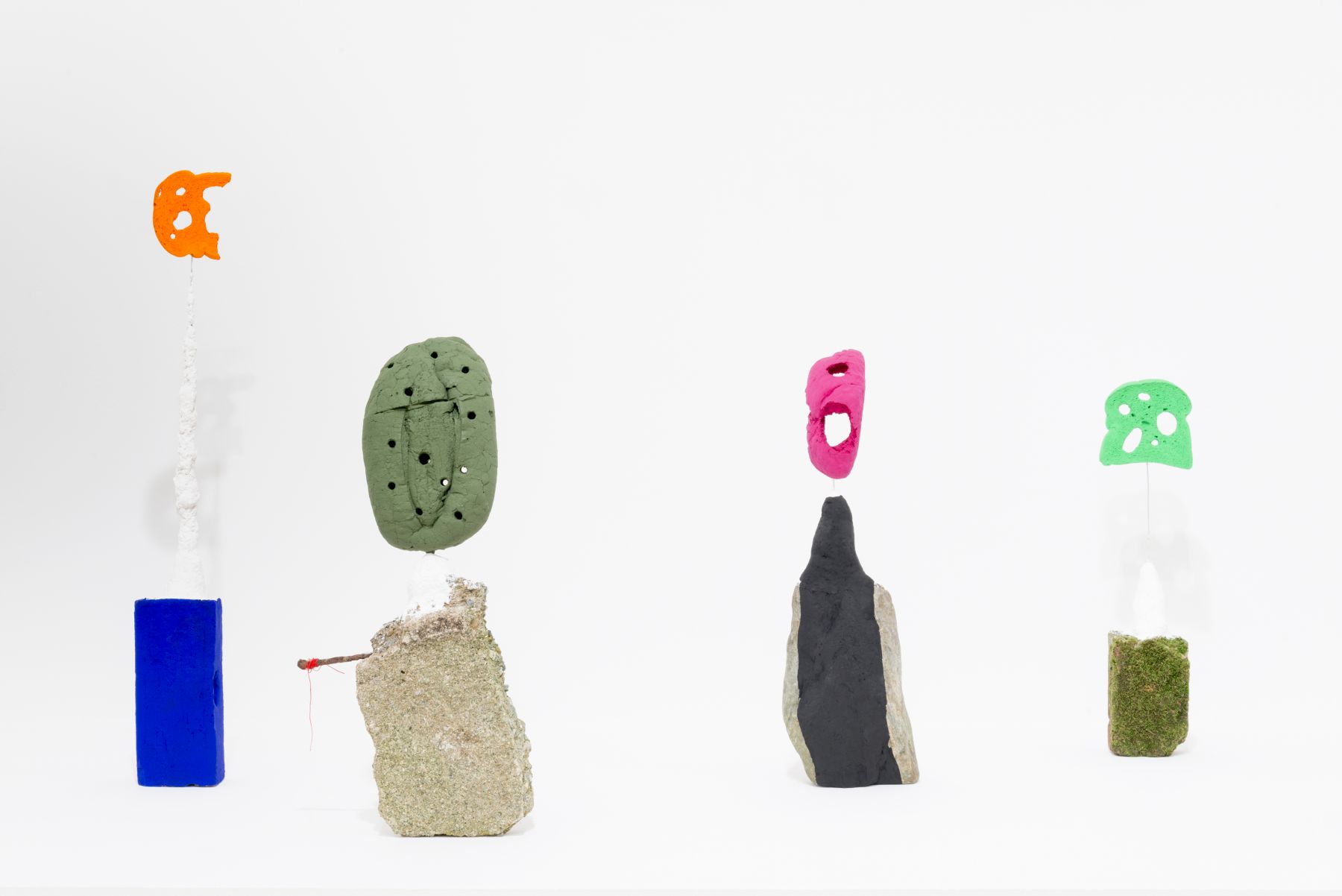Last month, Michelle Segre’s show “Driftloaf” closed at Derek Eller Gallery. The exhibition comprised brightly-painted loaves or slices of bread suspended on pediment-like found objects. They’re familiar but strange, and certainly pique one’s curiosity.
Irena Jurek sat down with Segre, and discussed the show.
IJ: Your current solo show at Derek Eller, which you titled, Driftloaf, seems a lot more quiet and pared-down compared to your previous installations which included large scale sculpture, painted walls and hundreds of drawings; it’s more concise and seems to be more about sculpture.
MS: With this show I wanted to do something really focused—which was about these bread shapes and this mystical aura that they can have around them, if you really just give yourself over to staring at this piece of bread. So, I built these ideas around that. I’ve been referencing bread in my sculptures going back to 1996, with the giant beeswax bread pieces I used to make.
IJ: Your newest sculptures remind me of Morandi, in how intimate and personal they are. There’s a sense of reverence for these objects. That mystical aura, which you described earlier, almost seems ritualistic.
MS: Definitely, you have to use your imagination a little bit to picture a piece of bread as being a porthole into history, language, and food.
IJ: An awareness of time and impermanence seems to be present in all your work.
MS: Yes, the idea that the whole thing could crumble one day!
IJ: Even when you were using mushrooms in your installations before, it seemed like the dried mushrooms can exist indefinitely (even if you know they’ll disappear eventually.)
MS: Or maybe not, we don’t know really. They found bread in Egypt that’s three thousand years old. When I was a kid, I was in the audience of this really popular television show for children called Wonderama. At the end of the show they gave us real bagels on a necklace, with the words Wonderama printed on them, and I think they were just covered in shellac. I had this bagel for twenty years, until I dropped it one day and it shattered into a million pieces. When I started to make the bread pieces, I was thinking about this object that somehow stays intact, but it does have this fragility and vulnerability that comes from it being an organic thing.
IJ: Color is so important to these new sculptures; they almost seem like condensed capsules of color field painting. The colors you chose are so bright and brilliant. They have a transcendental quality, like in a Rothko or Klein.
MS: I kept the colors really simple. They’re not mixed; they come right out of a jar. It’s this vinyl paint that seals and glues everything together. The color gives them this feeling of being contained; it’s a protective barrier. The color has this energy to it, and it’s functional, too.
IJ: It seems like there’s this limitless potential for your work to morph into something new. It’s difficult to figure out the beginning or end in your installations. There’s such an openness and freedom in your work.
MS: I used to be so precious about my work. I would make these finished things that I didn’t want to disturb in any way. I started developing a feeling that there is no exact end to this work. I had to break free of treating the material in this sacred way, so that I would have the freedom that I needed. It’s the idea of being open to the unforeseeable and letting that in.





Comments on this entry are closed.